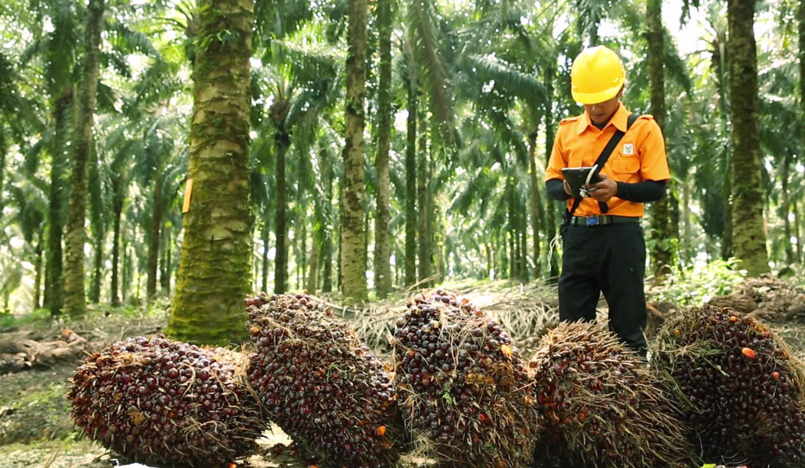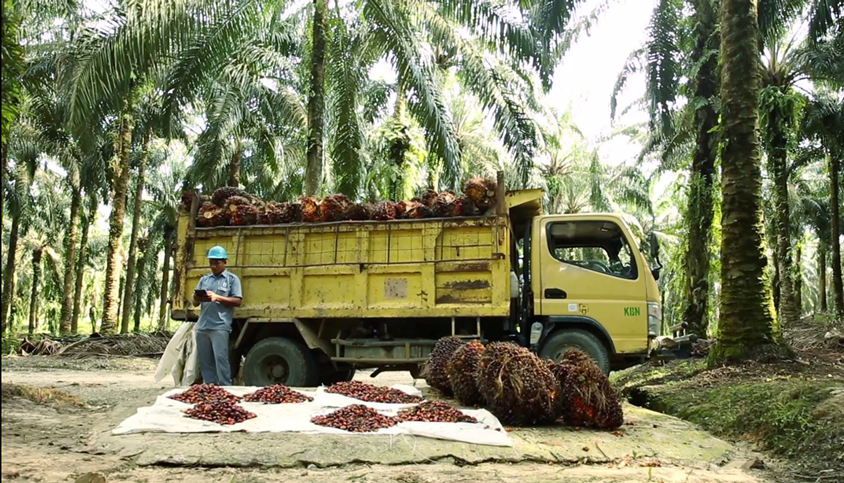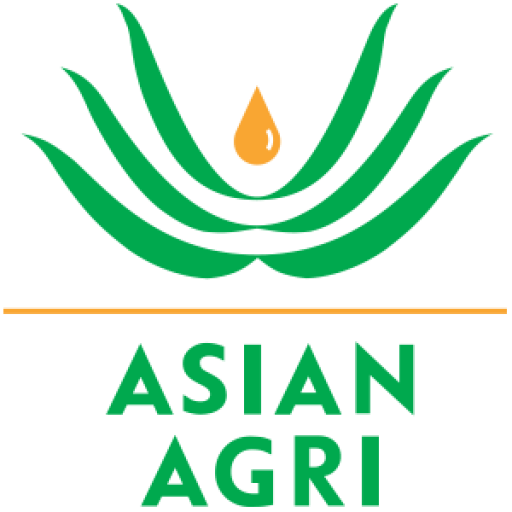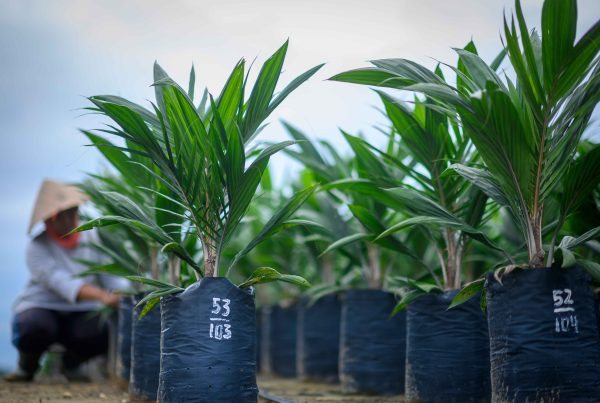At first glance, the palm oil industry may not seem like a high-tech one. The crop is harvested by hand using a long cutting tool known as an egrek, weighed by the roadside, and then loaded into the back of flatbed trucks to be transported to the local mill. Besides the addition of the diesel trucks, there is not much difference between the practice now and that from a century ago.
However, the Asian Agri Connected Plantation (AACP) program is aiming to change this.
Asian Agri manages 100,000 hectares of land, in addition to 60,000 hectares owned by partner smallholder farmers. As the company has a clear commitment under its sustainability policy to not clear additional land, the key to increasing production is raising palm oil efficiency.
And that’s where the AACP program comes in. At each stage of the palm oil production process, data is gathered and entered into tablet computers, providing a real-time picture of operations and allowing better forecasting.

AACP was first set up in 2016 to improve monitoring and efficiency in the company-owned Gunung Melayu Estate, before it was subsequently implemented in all company-owned plantations across Jambi, North Sumatra and Riau.
“We are able to know the exact data about how many fruit bunches we harvest in one area,” said Maradat L, Head of Digital Transformation at Asian Agri.
In each area, the estate foreman inputs data about trees that are ready to be harvested, and the system then informs and assigns a team to visit the area.
When palm oil fruit is harvested, it is weighed, and that information is also added to the system.
Lastly, truck drivers transporting the fruit which has been collected also provide information about their estimated arrival time at the mill, providing ongoing updates about the flow of resources to the production facility. This in turn contributes to Asian Agri’s traceability process to improve efficiency and reduce loss of time and resources.

Optimizing the harvesting of trees helps improve overall quality, since the ripeness of the fruit affects the quality and quantity of palm oil which can be extracted from it. The harvesting time of the fruit – whether it is early or late – can also affect productivity. “Before we used this technology, the process was quite tedious and staff often had to work overtime because they would have to return to the office to input data manually,” said Maradat.
Data collected from the field can also be used to determine other useful information, such as whether there is a need to apply fertilizer to the crops.
In its next phase, Asian Agri will be expanding the use of this technology to other departments within the company, including its Pest and Disease Control Department and its Maintenance Department.


